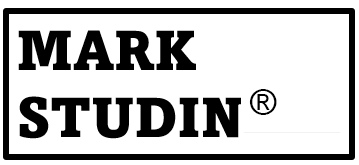ELECTRODIAGNOSTICS: ELECTROMYOGRAM/NERVE CONDUCTION VELOCITY (EMG/NCV) DIAGNOSIS & INTERPRETATION
10 Credit Hours
*CE Credits are for Doctors of Chiropractic.
**CME Credits are for Medical Doctors and Doctors of Chiropractic
***Please Note: This course is not approved in the state of CA.
****Please Note: This course is not approved in the state of OK.
This 10-hour course covers how to understand neurophysiology, neuroanatomy and neurodiagnostic testing. This electromyogram/nerve
conduction velocity (EMG/NCV) course has been engineered to allow the doctor to
understand the clinical necessity for electrodiagnostic testing, how testing is
performed, how to interpret the results based upon the report rendered by a
specialist in electrodiagnostics, how to document the results and how to
integrate that diagnoses or conclusion into the doctor’s overall treatment
plan.
Module 1: Anatomy and Physiology of Electrodiagnostics:. This section is an in-depth review of basic neuro-anatomy
and physiology dermatomes and myotomes to both the upper and lower extremities.
It covers the neurophysiology of axons and dendrites along with the myelin and
function of saltatory for conduction. This section goes into depth into
explaining the sodium and potassium pump’s function in action potentials.
Module 2: Nerve Conduction Velocity (NCV) Part 1: This
section discusses nerve conduction velocity testing, the equipment required and
the specifics of motor and sensory testing. This section covers the motor and
sensory NCV procedures and interpretation including latency, amplitude (CMAP)
physiology and interpretation including the understanding of the various
nuances of the wave forms.
Module
3: Nerve Conduction Velocity (NCV) Part 2: This section covers a continuation of
compound motor action potentials (CMAP) and sensory nerve action potentials
(SNAP) testing and interpretation including the analysis and diagnosis of the
wave forms. It also covers compressive neuropathies of the median, ulnar and
posterior tibial nerves; known as carpal tunnel, cubital tunnel and tarsal
tunnel syndromes. This section offers interpretation algorithms to help
understand the neurodiagnostic conclusions
Module
4: Needle Electromyogram (EMG) Studies: This section covers what EMG do inclusive of how the test is performed
and the steps required in planning and electromyographic study. This covers the
spontaneous activity of a motor unit action potential, positive sharp waves and
fibrillations. It covers insertional activity (both normal and abnormal),
recruitment activity in a broad polyphasic presentation and satellite
potentials. This covers the diagnosing of patterns of motor unit abnormalities
including neuropathic demyelinated neuropathies along with acute myopathic
neuropathies. This section also covers the ruling out of false positive and
false negative results.
Module
5: Electrodiagnostic (EMG/NCV) Overview and Clinical Grand Rounds: This module a complete overview of what EMG and NCV
procedures, results, diagnoses and documentation. It covers the clinical
incorporation of electrodiagnostic studies as part of a care plan where
neuropathology is suspected. It also covers how to use electrodiagnostics in a
collaborative environment between the chiropractor as the primary spine care
provider and the surgeon, when clinically indicated. This section covers sample
cases and health conclude and accurate treatment plans based upon
electro-neurodiagnostic findings when clinically indicated.
FEE: $325.00
Course Objective: For the doctor to understand the clinical necessity for electrodiagnostic testing, how testing is performed, how to interpret the results.
Instructors:
Anthony
Inglese DC, FIANC, DABCE, DIBCN, DIBE
Mark
Studin DC, FASBE(C), DAAPM, DAAMLP
John
Edwards MD, Neurosurgery
Michael
Barone DC, DISCN, DIBE
Instructions: Once you purchase the course online, it will be immediately active in your account. If you have any issues, please contact Cara 631-804-2845 or CaraRoss220@Gmail.com
Troubleshooting Suggestions:
- This course is supported by PC's and Mac devices
- Minimum 20mbs download speed
- Mobile device are not ideal as tracking is automated and often not mobilized
This course is Pace approved by the
Federation of Chiropractic Licensing Boards.
ACCREDITATION
This activity has been planned and
implemented in accordance with the accreditation requirements and policies of
the Accreditation Council for Continuing Medical Education (ACCME) through the
joint providership of the University at Buffalo Jacobs School of Medicine and
Biomedical Sciences and Cleveland University Kansas City, College of Chiropractic,
Post-Graduate Department.
The University at Buffalo Jacobs
School of Medicine and Biomedical Sciences is accredited by the ACCME to
provide continuing medical education for physicians.
CERTIFICATION
The University at Buffalo Jacobs
School of Medicine and Biomedical Sciences designates this live activity for a
maximum of 10.0 AMA PRA Category 1 Credit(s)TM.
Physicians should claim only the credit commensurate with the extent of
their participation in the activity.
PLANNING COMMITTEE
& SPEAKER DECLARATIONS
The Accreditation Council for
Continuing Medical Education (ACCME) and the University at Buffalo Jacobs
School of Medicine and Biomedical Sciences Standards for Commercial Support
require that presentations are free of commercial bias and that any information
regarding commercial products/services be based on scientific methods generally
accepted by the medical community. The following planners and presenter(s) have
disclosed financial interest/arrangements or affiliations with organization(s)
that could be perceived as a real or apparent conflict of interest in the
context of the subject of their presentation(s). Only the current
arrangements/interests are included. *Planning Committee
Activity Director and Instructor:
Mark Studin DC, FASBE(C), DAAPM – Nothing to Report
Anthony
Inglese DC, FIANC, DABCE, DIBCN, DIBE - Nothing to Report
John
Edwards MD, Neurosurgery - Nothing to Report
Michael
Barone DC, DISCN, DIBE - Nothing to Report
ACCME Standards of Commercial
Support of CME require that presentations be free of commercial bias and that
any information regarding commercial products/services be based on scientific
methods generally accepted by the medical community. When discussing
therapeutic options, faculty are requested to use only generic names. If they
use a trade name, then those of several companies should be used. If a
presentation includes discussion of any unlabeled or investigational use of a
commercial product, faculty are required to disclose this to the participants.
ACCME Original Launch Date: June 18, 2022 Termination Date: June 18, 2025

